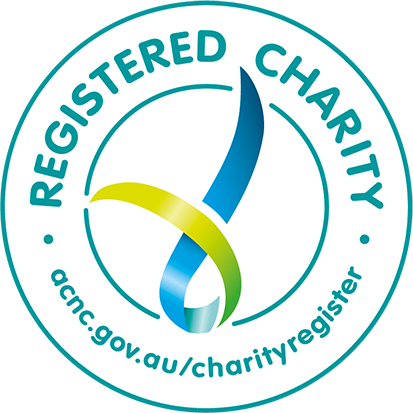Related Programs
Overview
Staying safe on the roads is something we all want. Following the road rules helps pedestrians, cyclists and motorists share the road safely.
Some of our frequently asked questions at the Safety School are on Roundabouts – which help manage traffic flow and improve safety by slowing the speed of vehicles – Bike and Pedestrian safety.
- When entering a roundabout always give way to vehicles already in the roundabout,
- On multi-lane roundabouts, obey the directional arrows on the road,
- Turning left – on approach, indicate left from the left lane, stay in the left lane and exit the roundabout from this lane,
- Driving straight ahead – you don’t need to indicate on approach. Enter in either the left or the right lane and exit the roundabout from this lane. If possible, indicate left when you’ve passed the last exit before the one you intend to use
- Turning right or making a full turn – on approach, indicate right from the right lane. Stay in the right lane and exit the roundabout from this lane. If possible, indicate left when you have passed the last exit before the one you intend to use. You can change lanes within a roundabout but you must indicate and give way to other vehicles,
- Cyclists and roundabouts – when entering a multi-lane roundabout, cyclists should move to the centre of their chosen lane. In a single lane roundabout, cyclists should ride close to the left boundary of the lane. Motorists entering a roundabout need to be aware of cyclists and not “squeeze” past or overtake them.
In WA, cyclists can ride on the road, footpath and shared paths.
It is mandatory to wear a securely fastened helmet and cyclists must have at least one effective brake and working bell or horn.
When riding on the road cyclists should:
- Ride on the left of the lane to allow vehicles to pass,
- Choose the middle of the lane if road conditions make it unsafe for vehicles to pass,
- Ride out from the gutter,
- Ride single file when the road narrows, when going uphill, or if traffic is building up behind; and
- Stay at least 2 metres behind a vehicle.
- Riding side by side (two abreast) makes cyclists more visible and is allowed where it is safe to do so. There must be up to 1.5m between riders. Legally, cyclists riding two abreast can pass, or be passed by, another cyclist or riding group where it is safe.
When riding on paths:
- Pedestrians always have right of way, and
- Riders must be single file and adjust their speed to the conditions.
For more information on the rules around cyclists visit the WestCycle website.
Source: WestCycle and Road Safety Commission
Some of our frequently asked questions at the Safety School are on Roundabouts – which help manage traffic flow and improve safety by slowing the speed of vehicles – Bike and Pedestrian safety.
Extra care is needed from all road users to keep pedestrians safe.
Drivers and riders should give way to pedestrians:
- When turning,
- Making a U-turn,
- At all intersections and stop signs, and
- At a slip lane with a stop sign or stop line.
- Motorists should approach pedestrian crossings at a speed slow enough to stop easily if needed.
Every year in WA there are, sadly, approximately 2,170 serious or fatal road crashes.
Everyone using our roads has an opportunity to help reduce road trauma.
Pedestrians themselves need to take care.
Only cross at traffic lights when the pedestrian light changes to green. If the light starts to flash once you have stepped off the kerb, continue to cross. If the signal shows a steady or flashing red pedestrian light and you have not started to cross, you must not do so until the light changes to green. Warning: crossing on a red light at an intersection = a $50 fine.
Visit https://streetwise.rsc.wa.gov.au/road-rules/pedestrians for more information on pedestrian safety.
Source: Road Safety Commission
To brush up on other road rules visit www.roadrules.rsc.wa.gov.au for information on:
- Roundabouts,
- Merging,
- Mobile phones,
- U-turns,
- Keeping left,
- Uncontrollable intersections,
- Crossing continuous lines,
- Overtaking,
- Emergency vehicles,
- Following/headlight distances,
- Cyclists and pedestrians.
Source: Road Safety Commission
A growing road hazard on our roads is driver distraction. In 2018, 29 people lost their lives in crashes where police believe inattention was a factor.
Taking your eyes off the road for just two seconds is the same as driving blind. While driving at 60km/h, thirty-three metres is the distance you will cover – and effectively be driving bind for – in two seconds.
Types of distraction:
- Manual – where the driver takes a hand or both hands off the steering wheel to manipulate a device,
- Visual – tasks that required the driver to look away from the road to visually obtain information,
- Cognitive – the mental workload associated with thinking about something other than driving; and
- Auditory – occurs when the driver focuses their attention on auditory signals other than the road environment.
Tips to stay focused:
- Turn off your mobile phone,
- Check a map before the journey to know what lies ahead,
- Make adjustments before departing, including mirrors, radio and GPS,
- Don’t eat or drink in the car,
- Ask passengers to be quiet if you can’t concentrate, and
- Ensure pets are properly restrained in the vehicle.
Source: Road Safety Commission
What NExt?
To book an excursion please contact our Safety School Coordinator below.







